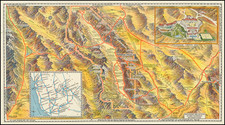Franciscan Chaplain with the Hezeta - Quadra Expedition to California and Northwest Coast
Fr. Campa Confirms Friendliness of Native Americans, Scopes Out Sites for a S.F. Mission
Little-Known Overland Expedition from Monterey to San Francisco in Sept. 1775
A remarkable original letter, written by one of the two Franciscan chaplains on the 1775 Hezeta and Bodega y Quadra expedition to Alta California and the Northwest ordered by the Viceroy of New Spain, Antonio María Bucareli. The letter is addressed to Fray Francisco Pangua, Guardian of the Colegio de San Fernando, in Mexico City, the leader of the Franciscan missions in the Californias. Fr. Miguel de la Campa writes from Rio Carmelo, while the frigate Santiago was docked in Monterey, on October 12, 1775. This was during the return leg of the important Spanish expedition to the Northwest coast under the command of Bruno de Hezeta. The expedition was ordered to confirm whether the Russians had established colonies on the Pacific Coast north of Monterey.
Evidence of Little-Known "Direct" Overland Trip from Monterey to San Francisco
Intriguingly, the letter contains one of the only known contemporary records of an easily overlooked land expedition to San Francisco Bay undertaken by a small group from Monterey after Hezeta's Santiago had arrived there. One of the distinguishing aspects of this expedition was the use of an Indian canoe which had been acquired from Northwest coast Indians.
Of prime importance here is the vital reporting to Pangua about the suitability of San Francisco for a new mission, emphasizing the docility of the Indians about which Campa had firsthand experience. Campa notes that he had located several promising sites for the mission. While the site of the future Mission San Francisco is usually understood as having been chosen by the Spanish missionary Pedro Font based on his March 1776 visit to the Bay Area with the explorer Juan Bautista de Anza, the present letter from Fray Campa suggests that he and Fr. Palou were already scouting sites for a San Francisco mission in the fall of 1775. Mission Dolores was founded in 1776, and the original adobe chapel is usually considered the oldest structure standing in San Francisco.
The overall Hezeta expedition was important for improving Spanish geographical knowledge, particularly of San Franciso Bay, as well as providing an opportunity to collect information about the native tribes living in the coastal areas of present day Washington and Oregon. The status of the Indian population was especially important to the Franciscans who were just starting to establish the California missions. Given that Spain had only a small number of soliders and a few scattered Franciscan missionaries on the Pacific coast between San Diego and Alaska, the present letter is a vital and important historical source, and is one of the only original (and among the earliest) documents of the expedition to ever appear on the market.
Three ships sailed out of San Blas on March 19, 1775:
- Santiago (frigate also known as the Nueva Galicia) - commanded by Bruno de Hezeta, reached the area of Vancouver Island, then turned around; on return trip Hazeta became the first to map and describe the mouth of the Columbia River. Followed the coast to Monterey Bay. With the two Franciscans on board: Fray Miguel de la Campa Cos and Fray Benito de la Sierra.
- San Carlos (packetboat, similar to a brig) - commanded by Juan Manuel de Ayala - whose pilot Jose Cañizares undertook the first mapping of San Francisco Bay, Aug. 1, 1775. Initially under Bodega y Quadra. Another Franciscan on board: Fray Vicente Santa Maria.
- Sonora (goleta or schooner) - commanded by Bodega y Quadra, sailed further north than other two ships, reaching Bucareli Sound, Alaska. Took formal possession for Spain of: Kruzof Island in Sitka and Prince of Wales Island. Returned due to scurvy outbreak, reached Monterey in October, sailors recovered at Monterey presidio, the Santiago and San Carlos already anchored there. Three vessels sailed back to San Blas together and arrived on November 20, 1775.
The Santiago reached the mouth of the Columbia River on August 17, 1775. The San Carlos returned to Monterey after completing the survey of San Francisco Bay. The Sonora went further north, as far as Sitka.
Campa is one of the few primary sources for the Hezeta expedition. Only a handful of firsthand accounts of the expedition are known, and most were jealouosly guarded by the Spanish who did not allow the publication of such work, lest useful geographical information fall in to the hands of the British, the Russians or the Americans.
John Gavin, in his introduction to the English translation of Campa's complete journal, has described Hezeta's 1775 expedition as "in some respects the most important of all Spanish voyages to the northwest." The importance of the expedition rests on the following pillars:
1) On August 17, 1775, Hezeta became the first to map and describe the entrance to the Columbia River, at latitude of 46° 11', which he named Bahia de la Asunción.
2) the Spanish gained knowledge abou the Native Americans inhabiting the Northwest, including firsthand information about their weapons, dress, and relative friendliness.
3) the Spanish took formal possession of several sites, including Trinidad in Northern California, and other places on the present coast of Washington and Oregon, as well as Bucareli Bay in Alaska; and finally
4) The expedition helped Spain quell her internal anxieties concerning Russian encroachments in the Northwest coast.
Campa's letter is exceptional for being an immediate firsthand account conveying many fresh details about the Indians and natural productions of the Pacific coast to to an important Franciscan leader during the time when that order was actively building missions in Alta California and planning others. The friar managed to pack much detail in this 2 1/2-page up-to-date mini report of the progress thus far made. He includes interesting descriptions of flora and fauna, including a brief list of herbs growing in California and used by the Indians: manzanilla (likely not chamomile, but another herb referred to by the Spanish using the same name), oregano, garlic, mint, and others. He also describes a proliferation of stawberries and "yellow blackberries," perhaps a salmonberries or cloudberries.
But what makes the letter extraordinary is Campa's notice of scouting possible mission locations during his exploration around San Francisco Bay, arriving by a "direct or straight route" and using a small Indian canoe! For context consider that Junípero Serra founded the San Diego de Alcalá Mission - the first of the Franciscan missions in Alta California - only six years earlier. Francisco Palou, the author of a famous biography of Serra first published in Mexico City in 1787, accompanied Campa and stands as perhaps the only other account of this fascinating little trip. Here follows an excerpt from the English translation of Palóu's Noticias de la California, describing the trip mentioned in Campa's letter:
Rivera y Moncada's soldiers did not return in time to be sent after Ayala. But towards the middle of September, a few weeks after the return of Bruno de Heceta in the Santiago from his voyage to the north, it was determined that he should proceed with a small party overland to San Francisco and assist Ayala. He accordingly started out from Monterey. accompanied by Fathers Francisco Palou and Miguel de la Campa Cos. They had nine soldiers, three marines and a carpenter and carried on one of their mules a small canoe [the once acquired from northern Indians]. On September 22 they arrived at the beach just south of Point Lobos, where they found Ayala's launch, thrown up by the surf and full of water and sand. The oars were not far off. Proceeding on to the cross, they found Santa Maria's letters. They followed his instructions by lighting a fire in view of Angel Island; but there was no response. They then returned to their camp by the side of a lake, having a small outlet to the ocean, to which they gave the name, it still bears, of "Nuestra Señora de la Merced-Our Lady of Mercy." The next day they repaired again to the beach opposite Angel Island; but nothing was to be seen of Ayala's vessel or party; and it became very certain that they had returned to Monterey. Under the circumstances, Heceta determined to do the same and, setting out on September 24, reached Monterey again on October 1, where he found the San Carlos at anchor by the side of the Santiago and learned from Ayala and his two Pilots the particulars of their survey of San Francisco. It appeared that they had remained over forty days in the bay and had left it only a short time before Heceta's arrival. Being asked whether it was a good port, they answered that it was one of the best in the possession of Spain; that in fact it was not only a port but a series of ports leading into one another, having a single entrance from the ocean and capable of containing a number of distinct fleets, each out of sight of and separate from the others. And among other things they said that they had had no intention of abandoning their little launch, which had done such excellent service; but that the day before they sailed it had broken away from its moorings and without doubt had been carried out to sea by the tides and cast away as found.
Hezeta - Bodega Expedition
The 1775 Spanish expedition under Bruno de Hezeta was a pivotal moment in the exploration of the Pacific Northwest. Its primary aim was to assess Russian colonial presence north of Monterey, as Spain sought to solidify its territorial claims in the region. Hezeta, along Bodega y Quadra and Juan Manuel de Ayala, played crucial roles in advancing geographical knowledge of the area. They sailed along the coasts of present-day California, Oregon, and Washington, gathering valuable information about the native tribes inhabiting these lands. This information was particularly significant for the Franciscans, who were actively establishing missions along the Pacific coast. Within the context of Spain's thinly scattered and far-flung military presence and the sparse distribution of Franciscan missionaries only beginning to get established in Alta California, the expedition marked a significant stride in territorial exploration and understanding of Indigenous populations in the 18th-century Pacific Northwest.
Anthony Hardinge Hall summarizes the expedition, its motivations and accomplishments, quite nicely:
Accordingly, a new expedition was organized comprising over one hundred men, under the command of Bruno de Heceta. Juan Perez as second-in-command piloted Heceta's flagship the Santiago, while the smaller ship, Sonora, was commanded by Bodega y Quadra, with Francsico Maurelle as pilot. Haceta was instructed to reach a latitude of 65 degrees and then work south, and to include a survey of San Francisco Bay. The expedition touched the entrance to the Columbia River and passed Vancouver Island, after which a conference was held.... Of special significance was Haceta's discovery of the Columbia River (Ensenada de Haceta), which anticipated Captain Robert Gray by about ten years. In addition, Spanish landings were made, with the customary taking of formal possession, in the present-day Alexander Archipelago region between 55 degrees and 57 degrees, at Sea Lion Bay (Puerto de los Remedios), near Salisbury Sound off Chichagof Island, and at Bucareli Bay on Prince of Wales Island. Spanish claims were hereby potentially brought into conflict with Russian... The expedition brought back a rich corpus of scientific knowledge gathered by Heceta, Perez, Bodega, Maurelle, and the chaplains, Miguel de la Campa Cos and Benito de la Sierra... Useful information was also brought back by Juan de Ayala and Fernando Quirós, who with José Cañizares as pilot explored the Bay of San Francisco and the Sacramento and San Joaquín Rivers, looking for suitable sites for the constructions of missions - Hull, Spanish and Russian Rivalry in the North Pacific Regions of the New World, 1760-1812, pages 87-88.
An English translation here follows, as well as a transcription of the original Spanish text:
My esteemed Father and Lord,
On August 29th, the frigate anchored in the port of Monterey. Although we have been detained for some time, I do not send you the journal because it is not yet completed, as we have been far from idle. Our Captain was charged by the Viceroy to survey the port of V.P. San Francisco. Despite his best efforts, the fog prevented entry by sea, so he decided to go by land, taking a canoe bought at the 49th degree from the Indians. Although this was unnecessary, as the Captain of Sn. Carlos had already satisfactorily surveyed the area, we managed to discover a direct route and encountered 18 very docile Indian rancherias, who expressed their desire for the establishment of missions. They conveyed this to us through very expressive signs (gestures). We also saw good sites for founding them, and realized that one of the chosen sites is unsuitable, as it lacks water for cultivation.
Our navigation to Monterey was challenging due to low water, but we anchored on June 9th at the 41st degree in a port named after the Holy Trinity, as we took possession of it on that day, June 11th. There is a rancheria in this port and two nearby, whose inhabitants showed great docility. Those from the port visited our ship adorned with flowers and invited us to their rancheria. We went in the afternoon and found the land very fertile, full of flowers like Rosa de Castilla, lilies, and other flowers, as well as herbs like lantana, manzanilla, oregano, celery, yerba buena, and other aromatic herbs consumed by the Indians. We found many strawberries and yellow and purple blackberries. The sea has little fish, only sardines [i.e. likely California herring or pilchards], trout, and clams, but the land has many large deer and even bison [probably interpreting elk tracks as bison tracks]. The other two rancherias visited us several times. They have nothing particularly curious. Near the port, there is a good river and the area is populated with very straight and thick pines, and many mulberry trees.
We stayed in this port for only two days to collect water and firewood, which was easy as there was plenty of wood on the beach and seven springs, though the main sources are two streams coming from the hill where the Indians have their rancheria protected from the northwest winds, which dominate the coast. Not wanting to waste time, the Captain decided not to stay longer in order to reach a higher latitude, so we left on June 19th.
On July 14th, we took possession of a cove named Bucarely Cove [i.e. Grenville Bay]. The anchorage was very dangerous, so the possession was taken as quickly as possible at 47 and a half degrees. The people of the schooner, anchored a bit further up, about a league away, were approached by Indians who are white with red hair. The men wear all of their hair and hang various colored shells from their ears, while the women pierce their noses and wear a ring, which seemed to be copper. The Indians use a kind of suede leather garment that covers them down to their knees, the style of which is similar to sleeves. Only one canoe approached the frigate, signaling friendship and inviting us ashore, but due to the dangers of the anchorage, we paid little attention. The people of the schooner, being near their rancheria, were invited and given gifts, and decided to cut a mast. However, the Indians betrayed them: as soon as the canoe arrived, they killed 5 of the 7 men, with the other two jumping into the sea, presumably drowning. The canoe was destroyed to salvage the nails. Later, 9 canoes set out to attack the schooner. Only one approached, and the few remaining men defended themselves valiantly, apparently killing 6 or 7 Indians.
[contemporary marginal note in a different hand and darker ink, beside above paragraph, citing the following passage from Miguel Venegas's Noticia de la California (1757):]
The Indians killed five sailors, and two were drowned while trying to escape. In the year 1741, on the 26th of July at the latitude of 55 degrees 36 minutes, the Indians killed ten Russians along with their pilot who had gone ashore armed. Venegas, volume 3, folio 324.
After leaving this cove, always facing contrary winds and with great effort, the frigate reached the 50th degree. However, due to scurvy and lack of crew to manage the ship, it was decided to return to Monterey, following the coast, which was possible due to clear days. The schooner, easier to manage with fewer people and having received what was needed, reached the 58th degree where it took possession, and another at the 55th degree. They faced many hardships, risking shipwreck six times. A wave carried away their canoe, they too were struck by scurvy, and reached Monterey with great difficulty. This is the most substantial part of the expedition; I could elaborate more but must be brief as the San Carlos departs soon [in fact, the next day, Oct. 13]. We do not know when we will leave, but I believe it will not be much longer.
I wish for your perfect health and am at your command for whatever pleases you. May God keep you for many years.
Carmelo, October 12, 1775
The original Spanish text:
R. P. Guar[dia]n Fr. Franc[is]co Pangua.
Mi estimado P[adr]e y Señor: dia 29 de Agosto dio fondo la Fragata en el puerto de Monterrey, y aunque hemos estado tanto tiempo detenidos, no remito a V.R. el diario por no tenerlo concluido, pues no nos hemos estado ociosos, porque n[ues]tro Capn tenia encargo del Sr. Virrey de registrar el puerto de N.P. Sn. Franco. y aunque hizo los esfuerzos posibles no dio lugar la neblina a poder entrar por mar, y determinó ir por tierra llevando un Canoa, que en el grado 49 compro a los Indios, y aunque se le escuso el trabajo por que y el Capn. del Sr. Carlos havia hecho, a satisfacion, el registro, logramos descubrir camino derecho, y concurrir con 18 rancherias de indios mui doceles, y que desean que se pongan Missiones como nos lo podian con señas bien exprecivas, y tambien vimos buenos pasages para fundar, y nos desengañamos que uno de los elegidos no sirve, pues no tiene agua para la siembra.
Nuestra navegacion se hizo sin venir a Monterrey, aunque con trabajos, por poca agua dimos fondo dia 9 de Junio en el grado 41 en un puerto, que por haver tomado posecion dia 11 que fue dia de la S[antisim]a Trinidad se le puso esse nombre. En el mismo puerto ay una rancheria, y otras dos en las inmediaciones, que se mostraron mui dociles, y los de el puerto fueron a bordo el dia lo conorados de flores, y convidaron para su rancheria, fuimos a la tarde y vimos la tierra mui fertil llena de flores, Rosa de Castilla, Lirios, y otras flores, Lanten, Manzanilla, Oregano, Apio, Yerba Buena y otras Yerbas olorosas que comen los Indios. Muchas frezas, y moras amarillas, y moradas. En el mar hay poco pescado, y solo ay Sardina, y Trucha almeja, en tierra muchos venados grandes, y aun ay Zíbolas. Las otras dos rancherias nos visitaron varias veces: no tienen coas curiosa. Ay cerca del puerto un rio bueno, y todo esta poblado de pinos mui greza y derechos, y muchos morales.
En este puerto solo estivimos 2 dias para hacer agua, y leña, que se hizo con poco trabajo pues en la misma playa se encontro mucha leña, y 7 manatiales de agua, aunque los principales son dos arroyitos que bajan de la loma en que los Indios tienen su Rancheria resguardada del norueste, que es el que reyna en la costa. Por no perder tiempo, no quiso detenerse en este puerto el Capn. por lograr subir â mayor altura, y asi salimos el dia 19 de Junio.
Dia catorze de Julio se tomo segunda posecion en una rada que se le puso la rada de Bucarely, el fondeadero mui peligroso, y asi se tomo la posecion con la brevedad pocible esta otra rada en 47 grados, y medio. [marginal note here: 47 g. 30 m.]. A los de la Goleta que estaban fonaeados un poco mas arriba como un lega los contestaron los Indios que ya son blancos, y el pelo rojo, los hombres abuegeran toda la oreja, y de los abuegeros cuelgan varias conchitas de diverso colores, las mujeres las narices y ponen un anillo, el que lleva asi las que fueron â bordo parecio ser de cobre usan los Indios una especie de cueras de gamuzas bien sobadas que les cubren hasta bajo de las rodillas la echura es como de mangas. A la Fragata solo fue una canoa haciendo señas de amistad, y convidando que fuessemos â tierra pero por los peligros del fondedero se les hizo poco caso. Los de la Goleta estaban cerca de su rancheria, y haciendoles convidado, y regalado determinaron hazer alguna aguaóa, y cortar un Mastelero; pero se portaron los Indio con traycion, pues lo mismo fue llegar la canoa, y de 7 hombres que iban despedasaron 5 y dos se echaron al mar, y parece que se aogaron: despedasaron la canoa, por aprovecharse de los Clabos, y despues salieron 9 canos con el fin de dar sobre la Goleta, se arrimo solo una, y los poco que quedaron se defendieron con valor, y segun les parecio murieron 6, o 7 Indios.
[contemporary marginal note in a different hand next to above paragraph, citing Miguel Venegas's Noticia de la California (1757) in darker ink:]
Mataron los Indios a cinco Marineros, y dos se ahogaron por huir. Año de 1741 en 26 de Julio en altura de 55 g. 36 m. Mataron los Indios a diez Rusos con su piloto que salieron armados a tierra. Venegas tom. 3. fol. 324.
Haviendo salido de esta rada siempre con vientos contrarios, haciendo todo esfuerzo pudo subia la fragata hasta el grado 50, pero por haver cargado el escorbuto, y no haver gente para el govierno del Barco se determino arribar a Monterrey reconociendo la costa, lo que se logro por haver tenido dias claros. La Goleta que se govierna con poca gente, y se le havia dado lo que necessitaba subío hasta el grado 58 en donde tomo pocesion, y [baxan?] de tomó otra en el grado 55 pasaron muchos trabajos, 6 veces estuvieron en riesgo de perderse, un golpe de mar les llevo la canoa, le cargo tambien el escorbuto, y llego â Monterrey con mucho trabajo. Esto es lo mas sustancial de la expedicion, a puedo alargarme mas por la brevedad con que sale el San Carlos. Nosotros no se quando saldremos, pero creo que no tardaremos mucho.
Deseo goze V.R. de perfecta salud, que me mande lo que fuere de su agrado, y que Dios S.V.S. gde. â V.R. m[ucho]s a[ñ]os. Carmelo, y Octubre 12 de 1775.
B[eso] l[a] m[an]o de V.R. su menor sub[je]to, y Capn.
Fr. Miguel de la Campa
Rarity
Original letters from the Hezeta Expedition are extremely rare in the market. And only a single 1771 Campa letter (pre-dating the Hezeta Expedition), is noted in RBH, offered by Randall & Windle in 1979.
A rare opportunity to acquire an important original document detailing little-known aspects of this major effort by Spain to consolidate its claims to the vast Northwestern coastal region of America: namely firsthand description of interaction with California Indians as well as a record of Hezeta and Campa's 1775 overland trek from Monterey to San Francisco.
Provenance:
The marginal note in an unknown but early hand is an interesting clue to provenance, however we have not been able to identify the the person who wrote the note. An English translation of Campa's account of this 1775 Pacific coast voyage was published in 1964: A Journal of Explorations Northward along the Coast from Monterey in the Year 1775. The translated title of that journal: "Journal of the voyage I made on His Majesty's frigate called the Sanitago, from the harbour of San Blas for a new discovery along the coast of Monterrey as far as 50 degrees." According to the editor of the publication, John Gavin, the journal used for the translation was a "Spanish contemporary manuscript copy." Interestingly, that manuscript journal also bore marginal annotations in an unknown hand, similar to the letter at hand.
It's worth quoting Henry Wagner's introduction to another account of the the Hezeta expedition, that of Fray Benito de la Sierra, the other chaplin. Wagner describes how much of the archival documentation of the expedition was dispersed during Mexico's War of Reform in the mid-19th-century:
The documents concerning this voyage are numerous; all the principal officers and both the chaplains kept journals....The original used was substantially a copy of the one now in the archives in Mexico. In 1781 the translation was inserted by Daines Barrington in his Miscellanies. During all these years the journal of Fr. Sierra has been unknown. No mention of it occurs in any document or any book that I have ever seen. The page of notations at the beginning indicates that it was delivered by Fr. Sierra to the College of San Fernando on his return. The library of that institution having been dispersed at the time of the reform in Mexico, many of the documents passed into the hands of private individuals and this particular one fell into those of Jose Maria Agreda either directly or indirectly. Agreda died over ten years ago and a few years afterwards his heirs began to dispose of his library. Mr. G. R. G. Conway happened on this document in a bundle of miscellaneous papers which he purchased from them. - Henry Wagner, "Fray Benito de la Sierra's Account of the Hezeta Expedition to the Northwest Coast in 1775," page 206.
The archives of the College of San Fernando were dispersed in the mid-1800s and many items have been in private hands ever since. The remnants of the Colegio's buildings were seriously damaged during the last big Mexico City earthquake in Sept. 2017, and as of this writing the public is not permitted inside.
Juan Francisco de la Bodega y Quadra was a notable figure in late 18th-century maritime exploration. Born in Lima, Peru, in 1744 to a Spanish naval family, he joined the Spanish Navy in 1760 and quickly distinguished himself as a skilled navigator and cartographer.
Bodega y Quadra's most significant contributions were in the exploration of the Pacific Northwest coast of North America. In 1775, he participated in expeditions that reached as far north as Alaska. He is perhaps best known for his explorations in 1779, where he charted the coastline of California, including the discovery of Bodega Bay, named in his honor.
In 1790, during the Nootka Controversy between Spain and Britain over territorial claims in the Pacific Northwest, Bodega y Quadra was appointed Spanish commissioner. He was tasked with negotiating with British Captain George Vancouver to resolve territorial disputes on Vancouver Island and the surrounding areas. His diplomatic skills were instrumental in the peaceful resolution of these tensions, leading to the Nootka Convention, which eased hostilities and outlined respective territorial rights.
Bodega y Quadra's legacy extends beyond his exploration achievements. He was known for his fair treatment of indigenous peoples and his efforts to understand and document their cultures. His detailed maps and navigational charts were invaluable to future explorers and remain a testament to his skill and dedication.
He passed away in 1794 in Mexico, leaving behind a legacy as one of the most important figures in the Spanish exploration of the Pacific Northwest. His contributions to navigation, diplomacy, and intercultural relations were significant in shaping the history of the region.











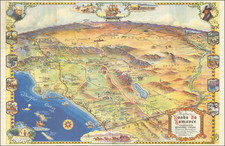
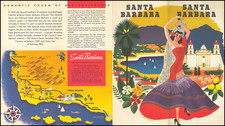
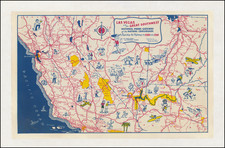
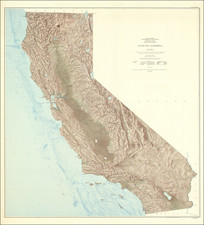
![National Map Company's California Showing Counties, Cities, Villages, and Post Offices[,] Steam and Electric Railroads, with Stations and Distances between Stations[,] National Forests, Reservations, Parks, Etc.](https://storage.googleapis.com/raremaps/img/small/92408.jpg)
